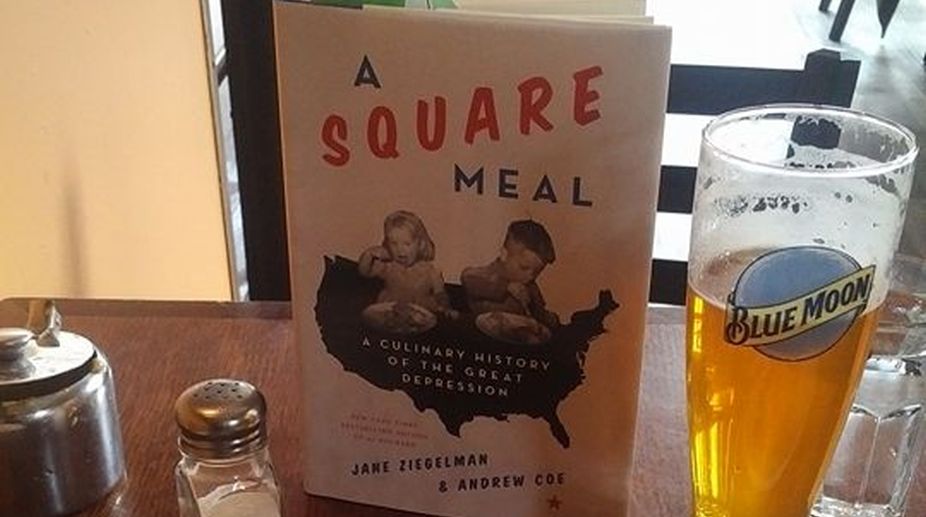National Sandwich Day: Try These Delectable Creations
On National Sandwich Day, discover the art of sandwich making and relish these delectable creations that cater to a variety of tastes and preferences.

A Square Meal (FACEBOOK)
A Square Meal: A Culinary History of The Great Depression, by Andrew Coe and Jane Ziegelman, published in 2016, is an engaging narrative of the struggle to place food on tables in American households during the Great Depression that lasted from 1929 to 1939. It was the worst economic downturn in the history of the industrialised world.
The destitute, from all levels of society, in New York City breadlines were served 85,000 meals a day. Breadlines were charitable organisations giving free bread and soup to the impoverished during the Depression. Unemployment and hunger spread across the USA exacerbated by droughts and floods. The fear that providing free food to the hungry would destroy the incentive to work interfered with relief efforts.
As jobs dwindled and farms dried up, people began to migrate in search of jobs. An organisation of professional women from the Bureau of Home Economics came forth with budgetary and nutritious advice, determined to educate people on cooking methods with low-cost but balanced diets. This remarkable book enlightens one on feeding the hungry in hard times.
Advertisement
Eminent American playwright, Arthur Miller, reflects in an essay on life in Brooklyn during the Great Depression, “One day in the year of especially long breadlines, a man knocked on my aunt’s door and asked if he could wash the windows for her.”This was a reflection during those demanding times when “strange men” were appearing for work or even “a piece of bread”. Miller was a student then and earned some pocket money by delivering loaves of bread to homes where it had been ordered.
Miller’s ritual of delivering bread would be on a bicycle beginning at five in the morning from Monday to Sunday. One day after these rounds when he returned home, he left his bicycle at the front porch, went inside to bring out a shopping bag, and returned to the porch to find that his bike had disappeared into thin air. It had obviously been stolen because he would never see it again. He had bought the bicycle after saving his precious pocket money. But those were times when people were desperate and a bike could have provided some much needed money, equivalent to several loaves of bread.
It was also a time when sandwiches were integral to people’s diets — a sandwich was economical because even leftover food could be chopped up and placed between slices of bread. Nutrition could thus be possible, to an extent, because soups and sandwiches played a major role during the Great Depression. This accentuates the use of bread as a sandwich and this simple food item has a special place in culinary history.
The origin of the sandwich is attributed to John Montagu, fourth Earl of Sandwich, (1718-1792), a British statesman, who literally ‘invented’ the sandwich to prevent him from leaving his table of cards when summoned for supper. He ate a hearty meal of two large slices of meat placed between two thick slices of bread.
This intelligent creation became prevalent in many parts of the world over time. Moving on towards these times, sandwiches are popular for lunch as they can be easily packed and taken to work. During a hurried lunch break, instead of eating a full three course meal, it is simpler to relish a sandwich and save time. It is apt for school kids to take in their lunch boxes or on picnics as they can be had both hot and cold. The choices of filling them are incredible from meat, vegetables, peanut butter and guava jelly to hard boiled eggs mixed with tomatoes to make an egg sandwich!
They are imaginatively filled and may be toasted or grilled — it all depends on one’s creativity. In England the menu for a formal tea must have the famous cucumber sandwiches and the cucumber slices have to be “wafer thin”. Vegetable cutlets sprinkled with sauce and put between two slices of bread are delicious for lunch or supper. In fast food takeaway outlets, sandwiches have been developed as an important section of the menu.
In Spain the word sandwich has been borrowed from the English language. In England the variety moves on to “butty” when a single slice is buttered and can be rolled over for a sandwich to be formed without cutting the slice in half, although the upper class in England would refer to a “butty” as “a heathen style of eating.”
From the time of the fourth Earl of Sandwich, through the Great Depression and to our lives today, we are left to reflect on one question: Will we ever be able to replace the simple and tasty sandwich?
Advertisement